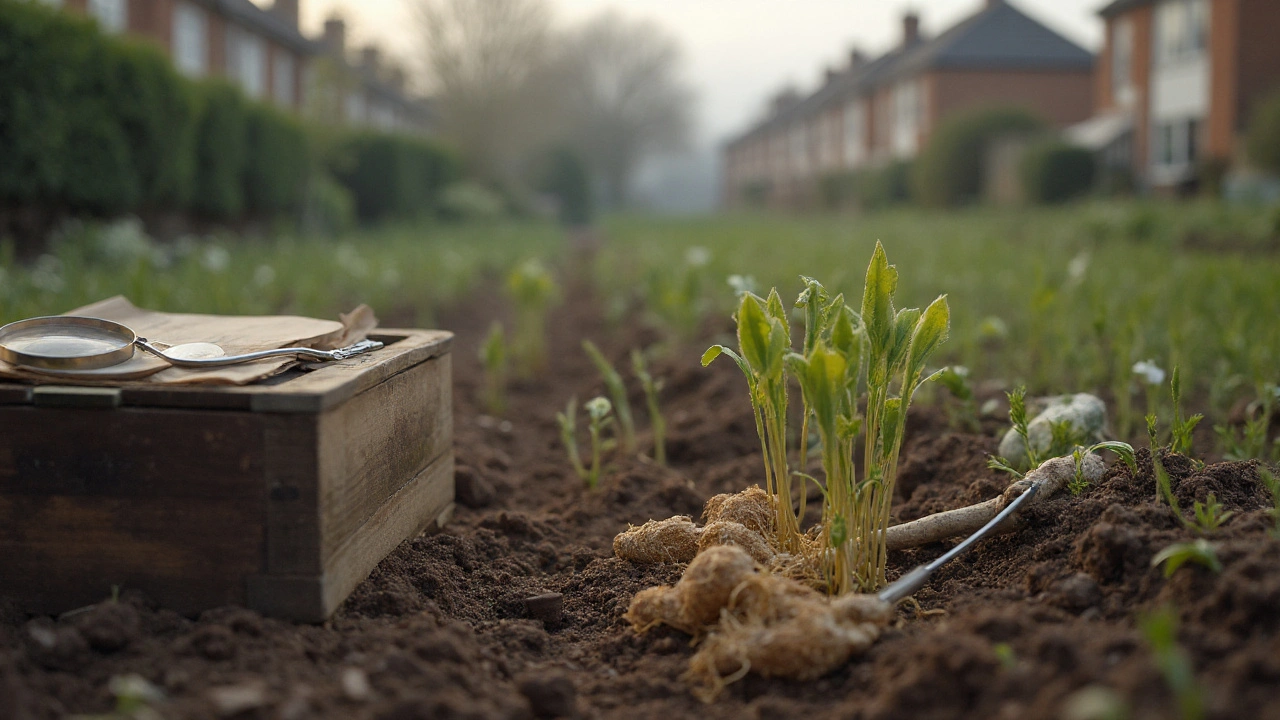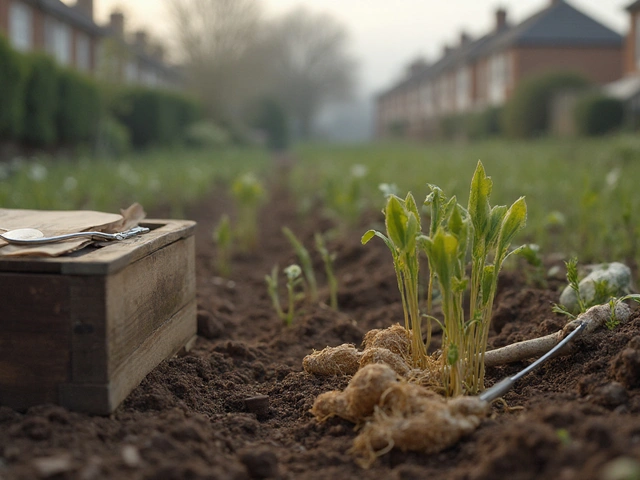You clicked because you’ve heard whispers that couch grass-yes, that persistent lawn invader-might be a legit dietary supplement. Here’s the straight deal: it’s not a miracle cure, but it can help as a gentle, hydration-supporting herb for your urinary tract when you use it right. I’ll show you the benefits backed by real monographs, how to dose it without guesswork, what to watch for, and how to buy or harvest it safely. Expect useful, not hyped.
- TL;DR: Couch grass (Elymus repens) rhizome is a traditional diuretic used to support urinary tract flushing-helpful for mild irritation, not a treatment for infections.
- Evidence: Supported by traditional-use monographs (EMA/HMPC, ESCOP, WHO). Modern clinical trials are limited; benefits are modest but real for flushing with fluids.
- How to use: Tea, tincture, or capsules; pair with steady water intake. Stop and see a clinician if symptoms persist >48 hours or worsen.
- Safety: Generally well tolerated; avoid with edema from heart/kidney disease, use caution with lithium, pregnancy, or if you’re on strong diuretics.
- Buyer’s tip: Choose products naming “Elymus repens rhizome,” with cGMP/third‑party testing, and no “proprietary blend” hiding the dose.
What Couch Grass Is and Why People Use It
Couch grass (Elymus repens, formerly Agropyron repens)-also called quackgrass or dog grass-is a hardy grass that spreads by underground rhizomes. Those rhizomes are the medicinal part. Herbalists have used them for centuries as a gentle diuretic and soothing agent for the urinary tract. This isn’t folklore alone: European and international authorities recognize it for traditional use. The European Medicines Agency (EMA/HMPC) has a herbal monograph for Elymus repens rhizome describing it as a traditional herbal medicinal product for flushing the urinary tract in minor complaints. ESCOP (European Scientific Cooperative on Phytotherapy) and the WHO monographs echo this “increase urine output to assist flushing” role.
What’s inside the plant that may help? Primarily polysaccharides (including triticin), mucilage, silica, and mineral salts like potassium. These constituents are thought to support hydration and provide a mild soothing effect on irritated urinary tissue. The diuretic action is considered mild and works best when you pair the herb with adequate water. You’ll also find small amounts of phenolic compounds. No single “magic molecule” drives the effect; it’s the total extract plus fluids that does the job.
What outcomes can you expect? In real life, people use couch grass to ease the feeling of urinary “grit,” mild burning, or urgency from irritation-especially in the first 24-48 hours while they push fluids. It’s not an antibiotic and won’t clear a bacterial UTI by itself. Think of it as a supportive herb for comfort and flow while you and your clinician decide next steps.
How strong is the evidence? Most of the support comes from long-standing use and pharmacopoeial monographs rather than modern randomized trials. That puts it in the “low-risk, modest-benefit” bucket-useful when matched to the right situation and used correctly, not a cure-all. If you like data: EMA/HMPC (2016, rev. 2018) lists it under traditional use for increased urine output; ESCOP details similar indications; WHO Monographs on Selected Medicinal Plants describe its diuretic and soothing traditional applications. Reference databases like the Natural Medicines Comprehensive Database (accessed 2025) rate evidence as limited but consistent with historical use.
Quick distinction: couch grass vs. wheatgrass. Wheatgrass is the young shoot of Triticum aestivum used as a juice; couch grass is Elymus repens rhizome used as tea/tincture. Different plants, different parts, different uses.
How to Use Couch Grass Safely (Forms, Dosage, Protocols)
If you’re new to herbs, keep it simple and focus on form, dose, and water intake. Most people notice the diuretic effect within a few hours of a dose, especially if they’re already hydrated. If you feel worse, stop and check in with a clinician.
Common forms
- Tea (infusion/decoction): Cut or coarsely ground rhizome.
- Capsules/Powder: Dried rhizome in standardized or non-standardized form.
- Tincture/Liquid extract: Hydroalcoholic extract; glycerite for alcohol-free.
Typical adult dosages used in traditional monographs (rounded for practicality; follow your product label if it differs):
- Tea: 2-4 g dried rhizome per cup, 2-3 times daily. Simmer 10-15 minutes, strain. Drink with an extra glass of water.
- Tincture (1:5, 25% ethanol): 5-10 mL up to 3 times daily.
- Fluid extract (1:1): 2-4 mL up to 3 times daily.
- Capsules: Often 500-1000 mg per capsule; 1-2 capsules, 2-3 times daily.
These ranges align with EMA/HMPC traditional use dosing and ESCOP monographs, adjusted to consumer products. If your bottle lists a different ratio (for example, 1:2 extract), use the label’s dose; ratios change potency.
Hydration rule of thumb
- On days you use couch grass, aim for pale-yellow urine. A simple rule: drink 1.5-2 liters of total fluids unless your clinician told you to restrict fluids.
- Spread doses through the day rather than one big dose. Your bladder will thank you.
Starter protocols (choose one)
- Tea protocol: Morning and evening, 1 cup of tea (2-4 g rhizome), plus 8-12 oz water alongside. Continue for up to 7 days. If urinary discomfort persists past 48 hours, call your clinician.
- Tincture protocol: 5 mL tincture in water, 2-3 times per day, plus regular fluids as above. Reassess after 48 hours.
- Capsule protocol: 500 mg, 2 capsules, 2-3 times per day with water. Do not exceed label instructions.
Stacking with other gentle herbs? Many people pair couch grass with corn silk, nettle leaf, or marshmallow root for comfort. If you combine herbs, keep the total diuretic effect in mind and hydrate appropriately. If you’re already on a diuretic medication, talk to your clinician before stacking.
Who should not use couch grass?
- Edema due to heart or kidney disease: Avoid unless your clinician says otherwise. This matches EMA cautions for diuretic herbs.
- Pregnancy and breastfeeding: Not enough data. Most monographs advise against without medical supervision.
- Children under 12: Traditional monographs generally do not recommend without clinician guidance.
- Lithium: Increased urine flow can affect lithium levels. Keep your prescriber in the loop.
- Severe dehydration or acute kidney issues: Avoid and seek medical care.
Signs you need medical care now
- Fever, flank/back pain, blood in urine, chills, nausea/vomiting-possible kidney or systemic infection.
- Symptoms lasting beyond 48 hours despite fluids and rest.
- Recurrent UTIs or known urinary tract abnormalities.
Side effects and what to expect
- Common: More frequent urination. That’s the point.
- Occasional: Mild stomach upset or loose stools if you overdo tea strength; ease back.
- Rare: Skin sensitivity or allergy. Stop if rash, itching, or breathing issues occur.
Practical dosing heuristics
- Start low: First dose at the lower end of the range. If tolerated, step up within the range.
- 2-day check: If no improvement after 48 hours, don’t just add more herb-reassess and consider medical evaluation.
- Don’t take right before bed unless you enjoy 2 a.m. bathroom trips.
What about athletes or heavy sweaters? If you train hard (I run the Pittsburgh river trails), factor in sweat losses. Pair couch grass with electrolytes so you’re not just flushing sodium and feeling sluggish.

Buy Smart: Quality, Sourcing, and DIY Harvesting
Not all “couch grass” products are equal. Here’s how to avoid weak formulas and questionable sourcing.
Exact identity matters
- Look for “Elymus repens rhizome” (syn. Agropyron repens) on the label. The word “grass” alone is not enough. You want the rhizome, not random aerial parts.
- Avoid vague blends like “proprietary urinary support 950 mg”-you can’t tell how much couch grass you’re getting.
Quality markers and testing
- cGMP Manufactured: Indicates the facility follows current Good Manufacturing Practices.
- Third‑party tested: NSF, USP Verified, or ISO 17025 lab certificate of analysis (COA) for identity, heavy metals, microbes.
- Freshness cues: For teas, look for a clean, slightly sweet, hay-like aroma and pale-tan rhizome pieces. Musty smell or gray dust is a bad sign.
Price and dose sanity check
- Tea: A month’s supply (100-200 g) is usually affordable. If it’s priced like saffron, look elsewhere.
- Tinctures: You’ll typically use 10-30 mL per day, so a 60 mL bottle lasts 2-6 days. Price that out before you buy.
- Capsules: Aim for products that disclose per-capsule mg and daily servings. If the label hides dose details, skip it.
Red flags
- “Clinically proven to cure UTIs.” That’s marketing fiction. Couch grass supports flushing; it’s not a cure.
- No species or part on label.
- Unrealistic dose claims like “1 drop daily does it all.”
DIY harvesting (for the confident and careful)
- Identification: Elymus repens is a common invasive grass with long, creeping rhizomes. If you’re not 100% sure, don’t harvest.
- When to dig: Early spring or fall when rhizomes are plump.
- Where not to harvest: Roadsides, lawns treated with herbicides, or industrial soils. In cities like Pittsburgh, assume many lawns are sprayed.
- Prep: Rinse rhizomes thoroughly, cut into small pieces, spread thin to dry with airflow at low heat (below 95°F/35°C) until brittle.
- Storage: Airtight glass jar, cool and dark, up to one year. Label with date and species.
Home tea method
- Measure 2-4 g dried rhizome (about 1-2 tsp chopped).
- Simmer in 1 cup water for 10-15 minutes; lid on to keep aromatics in.
- Strain, sip warm, and follow with an extra cup of water.
Tip: Combine with a splash of lemon or a little honey if you find the taste too grassy.
FAQs, Comparisons, and Action Checklists
Quick comparisons: couch grass vs. other urinary-support herbs
| Herb | Primary action | Best for | Watch-outs |
|---|---|---|---|
| Couch grass (Elymus repens) | Mild diuretic, soothing mucilage | Gentle urinary flushing with fluids | Not for edema from heart/kidney disease; lithium caution |
| Corn silk (Zea mays) | Soothing, mild diuretic | Irritation, urgency sensations | Low risk; quality varies |
| Nettle leaf (Urtica dioica) | Diuretic, mineral-rich | Fluid retention, general support | May interact with diuretics |
| Dandelion leaf (Taraxacum officinale) | Diuretic, potassium-sparing | Bloating, mild water retention | Allergy in Asteraceae-sensitive folks |
Buyer’s checklist
- Label lists “Elymus repens rhizome” and a clear dose.
- cGMP + third‑party tested (NSF/USP/ISO 17025 COA).
- No proprietary blends hiding content.
- Reasonable dose per serving that matches traditional ranges.
- Clear usage and safety statements on the product.
Usage checklist
- Pick one form (tea, tincture, capsules) and stick with it for a week.
- Hydrate: 1.5-2 liters daily unless told otherwise.
- Check symptoms at 24 and 48 hours; escalate care if worsening.
- Avoid if you have edema from heart/kidney issues or are on lithium.
- Stop if rash, severe cramps, or fatigue from dehydration appears.
Mini‑FAQ
- Will couch grass fix a UTI? No. It can support comfort and flushing but doesn’t replace antibiotics when needed. Fever or flank pain means call your clinician.
- Is it safe to take daily? Short, intermittent use for a few days is typical. For daily long-term use, get personalized advice, especially if you’re on meds.
- Can I take it with cranberry? Yes, if your stomach tolerates it. Keep fluids up and monitor for stomach upset.
- Does it affect electrolytes? It can increase urine output, so pair with normal dietary salt or an electrolyte drink if you feel lightheaded.
- Gluten concerns? The rhizome isn’t a gluten grain product; gluten is a storage protein in certain seeds. Cross-contact is still possible in facilities-check labels.
Decision guide
- Situation: Mild urinary burning/urgency without fever → Consider couch grass + fluids for 24-48 hours.
- Situation: Recurrent UTIs, pregnancy, kidney disease, or on lithium → Talk to your clinician first; don’t self-treat.
- Situation: Symptoms escalate or persist → Stop herb and seek medical care.
Evidence notes and credibility
- EMA/HMPC Herbal Monograph on Elymus repens rhizome (2016; revised 2018): Traditional-use indication for increased urine output to support urinary flushing.
- ESCOP Monographs (latest updates through 2019): Similar indications; dosing ranges comparable to above.
- WHO Monographs on Selected Medicinal Plants (Vol. 2): Describes traditional diuretic use and safety considerations.
- Natural Medicines Comprehensive Database (accessed 2025): Lists couch grass (Elymus repens) as possibly effective for urinary flushing based on traditional use; limited clinical trials.
Pro tips from the field
- If the tea tastes harsh or causes stomach rumble, cut the dose by one-third and add marshmallow root for smoothness.
- For travelers: tincture is easiest-no brewing, consistent dosing.
- Track your bathroom frequency the first day so you know your body’s response before a work meeting or a long drive.
One last clarity point: Expect gentle support, not dramatic changes. If your symptoms are loud, get care-don’t wait it out with tea.
couch grass benefits often show up as subtle relief: easier flow, less prickly urination, and a sense that your urinary tract is “rinsing” more comfortably when you’re well hydrated. That’s the level of effect to look for-and it usually appears within a day when the herb is a good fit.
Next steps
- New to couch grass? Start with a 7-day tea or tincture plan and a hydration goal.
- Track: morning symptoms, fluids, and any side effects for two days.
- If you’re on medications or have kidney/heart conditions, bring this plan to your clinician first.
Troubleshooting
- No effect after 48 hours: Either increase to the mid-range dose if you started low, or pivot to a different strategy with your clinician.
- Too many bathroom trips: Reduce dose by 25-50% and avoid late evening dosing.
- Stomach upset: Shorten the tea simmer time or switch to capsules.
- Dry mouth or fatigue: Add electrolytes and reassess hydration; consider skipping doses on heavy training days.
I live in Pittsburgh, where couch grass pops up pretty much everywhere. I’ve used it as a simple tea on days when my urinary tract felt scratchy after long summer runs-nothing fancy, just steady sips and more water. It’s not dramatic, and that’s the point. It’s a calm, practical herb when used with common sense.








rafaat pronoy September 5, 2025
Nice rundown, will give it a try 😊
sachin shinde September 12, 2025
The exposition on Elymus repens is exhaustive, yet one must not overlook certain lexical missteps that pepper the discourse. For instance, the phrase "traditional diuretic" is redundantly employed, whereas "conventional diuretic" would suffice. Moreover, the article oscillates between British and American spelling, which is a subtle source of cognitive dissonance for the reader. While the dosage guidelines are commendably detailed, the omission of a clear contraindication hierarchy could mislead novice herbalists. It would have been prudent to explicitly separate contraindications from cautions, thereby enhancing semantic clarity. The discussion of phytochemical constituents is thorough, yet the mention of "triticin" without a brief definition may alienate those unfamiliar with polysaccharide nomenclature. In addition, the recommendation to avoid "proprietary blends" is astute, but a brief justification rooted in regulatory standards would bolster the argument. The hydration rule of thumb is a valuable inclusion; however, it would benefit from a quantifiable metric, such as milliliters per kilogram body weight. The comparative table of herbs is insightful, though the formatting could be refined to improve readability on mobile devices. The author's anecdotal reference to Pittsburgh adds a relatable touch, albeit at the risk of regional bias. The safety section rightly warns against lithium interactions, yet the underlying pharmacokinetic rationale remains unexplored. The suggestion to pair couch grass with electrolytes for athletes is laudable, though the source of electrolyte recommendations is not cited. Finally, the concluding reminder to seek medical attention for severe symptoms is essential and well-placed. Overall, the composition is informative, but polishing these linguistic and structural elements would elevate it from competent to exemplary.
Leon Wood September 18, 2025
Wow, this guide is a goldmine for anyone trying to navigate natural urinary support! I love how you broke down the forms-tea, tincture, capsules-so it’s easy to pick what fits your lifestyle. The dosage tables are spot on; I’ve been sipping the tea protocol on my runs and notice the difference right away. Pairing the herb with extra water is a simple hack that many overlook, and you nailed that reminder. The safety notes are crystal clear, especially the lithium and edema warnings-big thanks for that. Your buyer’s checklist saved me from a shady product on the market; now I know exactly what to look for. The DIY harvesting section gave me confidence to try it in my garden, and the step‑by‑step drying tips are genius. I also appreciate the mention of stacking with corn silk or nettle; I’ll experiment with a gentle blend. The table comparing other herbs makes the decision process a breeze. Overall, this guide feels like it was written by someone who’s actually used couch grass in real life-so relatable and practical. Keep the awesome content coming! 🙌
George Embaid September 25, 2025
Totally agree, Leon! The practical tone makes it easy to jump in without feeling overwhelmed. I’ve also found the hydration rule to be a game‑changer for athletes. Thanks for sharing!
Meg Mackenzie October 1, 2025
Reading this, I can’t help but wonder who’s really behind the “couch grass” hype. Is it just a harmless herb, or is there a coordinated push by supplement giants to mask other ingredients? The mention of “third‑party testing” feels like a buzzword meant to reassure us, but without transparent certificates, it’s hard to trust. Also, the disclaimer about “not for pregnancy” is vague-are they hiding potential teratogenic data? Something feels off about the whole narrative.
Shivaraj Karigoudar October 8, 2025
Meg, you raise some valid concerns, but let me add a few technical points. First, the phytochemical profile of Elymus repens is well‑documented in the European Monographs; there’s no hidden synthetic additive in reputable extracts. The “third‑party testing” phrase is indeed a compliance requirement under cGMP, and most labs publish COA PDFs-check the manufacturer’s website for the PDF link. Regarding pregnancy, the monographs classify it as “use with caution” because of limited human data, not because of known teratogenicity. It’s a standard precaution for many herbs, not a red flag. Lastly, the marketing hype you mention is typical for any botanical product-what matters is the sourcing and verification, which the guide already emphasizes. So while skepticism is healthy, the evidence base for couch grass remains solid when you stick to reputable suppliers.
Matt Miller October 14, 2025
Looks like a solid, balanced overview.
Fabio Max October 21, 2025
Yep, concise and clear.
Darrell Wardsteele October 27, 2025
The article is decent but could use stricter grammar checks. For example, "increase urine output" should be "increase urine output," not "increase urine output". Also, avoid the phrase "real life"; "in practice" is more precise. No emojis needed.
Madeline Leech November 3, 2025
Darrell, you’re nitpicking over commas while ignoring the big picture: couch grass is just a mild diuretic that won’t replace proper medical care. Stop obsessing over minor punctuation and focus on the fact that many people think this herb is a cure‑all, which it isn’t.
Barry White Jr November 9, 2025
good guide thanks
Andrea Rivarola November 16, 2025
I appreciate the brevity, Barry, but a tiny bit more detail could help newcomers. Perhaps a quick note on how to assess the taste of the tea-if it’s overly bitter, that might indicate over‑extraction, which can irritate the stomach. Also, a reminder that “cGMP” stands for “current Good Manufacturing Practices” would clarify the acronym for those unfamiliar.
Tristan Francis November 22, 2025
All this talk of herbs feels like a distraction from the real agenda. Did you know that big pharma funds many of these “traditional use” studies? Keep an eye out.
Keelan Walker November 29, 2025
😃 Great point, Tristan! 👌 The funding sources are worth checking, but the monographs we’re referencing are from independent European agencies, not pharma‑backed. Still, staying vigilant is always smart. 🌱👍
Heather Wilkinson December 5, 2025
Thanks for sharing this! It’s so helpful to have a clear checklist when picking a supplement. 😊
Henry Kim December 12, 2025
Glad you found it useful, Heather. Let me know if you have any questions about the dosing protocols.
Neha Bharti December 18, 2025
Very concise and to the point.
Samantha Patrick December 25, 2025
Neha, the conciseness is great, but adding a quick tip about checking the expiration date on herbal products could prevent unnecessary waste.
Ryan Wilson December 31, 2025
Interesting guide, though I think it glosses over the potential for electrolyte imbalance when increasing urine output. People should be reminded to monitor electrolytes, especially potassium, to avoid muscle cramps.
EDDY RODRIGUEZ January 6, 2026
Exactly, Ryan! ⚡️ Electrolyte balance is a key piece of the puzzle-think of it like tuning a guitar; every string (or mineral) needs the right tension. When you up the diuretic effect, you want to make sure you’re not stripping away too much potassium or sodium. A simple electrolyte drink or a pinch of sea salt can keep things harmonious. Also, keep an eye on any lingering fatigue; that can be a sign you’re over‑diureting. Stay tuned, stay balanced, and keep those kidneys singing! 🎶